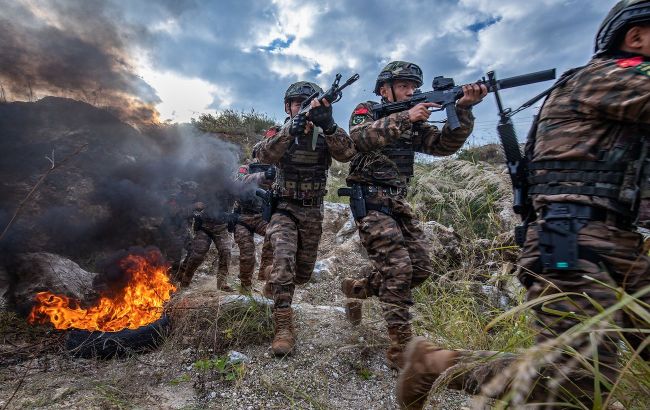China and Philippines reach agreement to end dangerous confrontation
 Illustrative photo: Chinese army (Getty Images)
Illustrative photo: Chinese army (Getty Images)
China and the Philippines have reached an agreement they hope will end the confrontation over the most contested area in the South China Sea - the Second Thomas Shoal, according to the AP.
A decisive agreement was reached on Sunday following a series of meetings between Philippine and Chinese diplomats in Manila and the exchange of diplomatic notes.
The Philippine government released a brief statement announcing the agreement, though it provided no details.
"Both sides continue to recognize the need to deescalate the situation in the South China Sea and manage differences through dialogue and consultation and agree that the agreement will not prejudice each other’s positions in the South China Sea," said the Philippine Department of Foreign Affairs.
China had previously stated it would allow the Philippines to transport food, water, and other essential supplies to its forces aboard the BRP Sierra Madre, which is stranded on the shoal, provided Manila agreed not to deliver construction materials to fortify the ship. China also sought advance notice and the right to inspect vessels for such materials, sources told the agency.
According to a Philippine official, the Philippines rejected these conditions, and the final agreement does not include them.
China and the Philippines' competition in the South China Sea
The long-standing territorial dispute over Second Thomas Shoal has been escalating since early last year when the Philippines attempted to deliver supplies to the BRP Sierra Madre, which is stranded on the shoal and considered a Philippine outpost in the region.
According to the Philippine government, during the worst clash on June 17, Chinese forces in motorboats repeatedly rammed two Philippine Navy boats and then boarded them to prevent Philippine personnel from delivering supplies, including firearms, to the ship.
After multiple rammings, the Chinese seized the Philippine Navy boats, damaging them with machetes and homemade spears. They also confiscated seven M4 rifles, which were packed in cases, along with other supplies. Several Philippine Navy personnel were injured during the violent confrontation.
China and the Philippines have accused each other of provoking the standoff, each asserting its sovereign rights over the shoal, which the Philippines calls Ayungin Shoal and China refers to as Ren'ai Jiao.
Threat of conflict involving the US
The US and its key Asian and Western allies, including Japan and Australia, have condemned China’s actions at the shoal and called for adherence to the rule of law and freedom of navigation in the South China Sea.
For decades, the US military has employed Navy ships and fighter jets for what it terms freedom of navigation and overflight patrols. China opposes this, viewing it as a threat to regional stability.
Washington does not have territorial claims in the disputed waters but has repeatedly warned that it is committed to defending the Philippines, its oldest treaty ally in Asia, if Philippine forces come under armed attack, including in the South China Sea.
On July 17, China and Russia began naval exercises with live-fire drills in the South China Sea.

